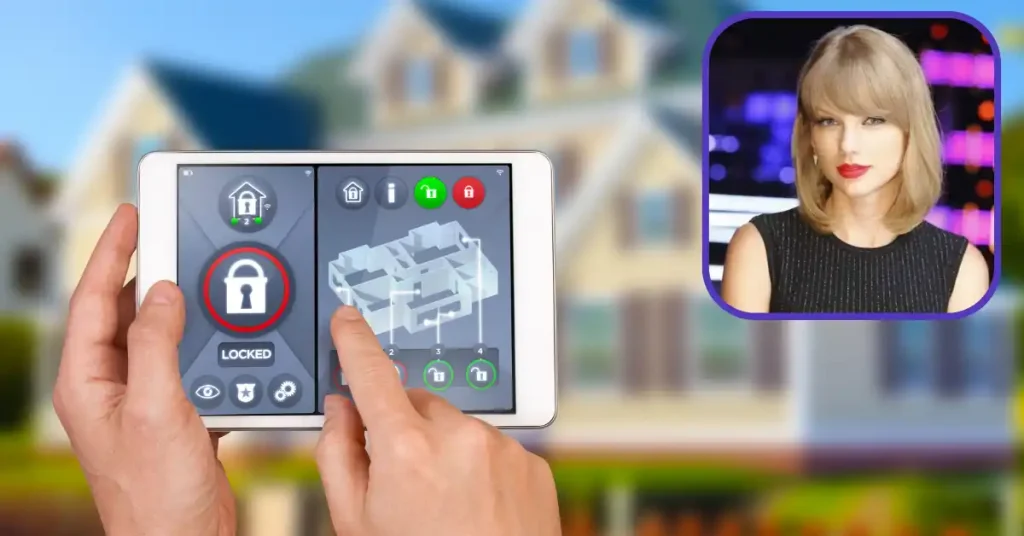Chris Brown’s Famous Graffiti House Listed for Sale — Here’s the Price
Would you ever live in a house where every wall screams street art?
Chris Brown’s once-viral Hollywood Hills home — yes, the one with bold graffiti splashed across its exterior and Sonic the Hedgehog murals inside — is back on the market. Listed for $2.9 million, the mansion has already stirred up conversations, confusion, and curiosity online.
And honestly? It deserves the buzz. Because this isn’t just another celebrity listing.
This is a house that became a cultural statement, a neighborhood controversy, and now, a luxury real estate wildcard.
But here’s the thing — most headlines will tell you it’s “iconic” or “weird” and call it a day. What no one’s really asking is:
- What does this home actually say about Chris Brown, his brand, and what people want in 2025 real estate?
- Is this a piece of street art history — or just a flashy liability wrapped in LED lights and lawsuits?
In this article, I’ll break down exactly why this house matters — not just to fans, but to buyers, investors, and even urban artists. We’ll explore what makes it so polarizing, what’s changed since it last sold, and whether this loud, luxury canvas is worth your time — or your $3 million.
A Canvas of Controversy and Creativity
It started with spray paint. Not in a dark alley or an abandoned warehouse — but right on the front walls of a multimillion-dollar mansion in Hollywood Hills.
Chris Brown didn’t just decorate his home. He turned it into a canvas — loud, unapologetic, and deeply personal. Monster faces, neon shades, street-style chaos. The kind of art that makes you stop, stare… or file a complaint.
And that’s exactly what happened.
Neighbors were quick to react — not with admiration, but alarm. Several filed formal complaints with the city of Los Angeles, calling the artwork “frightening,” “inappropriate,” and out of place in a quiet, affluent neighborhood. Within weeks, the city’s Department of Building and Safety issued fines, and the media dubbed it the “graffiti mansion.”
Brown, always unfiltered, clapped back publicly. On social media, he argued that art wasn’t just meant for galleries — that the house was his expression.
The backlash only amplified the home’s infamy. It went from being just another celebrity property to a symbol of creative defiance. Even after Brown moved out and sold it in 2014, much of the artwork remained — preserved like a museum of conflict between freedom and conformity.
And now, a decade later, that tension is still painted on every wall. The question for any new buyer isn’t just “Can I afford this?” — it’s “Can I live in this?”
Inside the Vibrant Walls
Stepping into Chris Brown’s former mansion isn’t like walking into a home — it’s like walking into his head.
Every inch of the 2,800-square-foot interior feels like an art exhibit curated by a graffiti-loving futurist with a gamer’s soul and a pop star’s flair for drama. There’s Sonic the Hedgehog racing across a wall, a jungle-themed game room, and vibrant murals that blur the line between reality and animation.
But here’s the twist: underneath the chaos, there’s craftsmanship.
You’ll find a sleek Boffi kitchen — the kind of Italian design that screams money without ever raising its voice. The bathrooms? Spa-style wet rooms with rainfall showers and a bold red freestanding tub that looks like it belongs in a music video.
There’s also elevator access between floors (because why not), and a layout that feels more like an exclusive artist loft than a Hollywood family home.
Real estate tip: Homes with strong aesthetic “themes” are polarizing — they attract fewer buyers but can sell fast to the right buyer at a premium.
And that’s exactly what makes this place so rare. It’s not generic. It’s not neutral. It’s personality — raw, artistic, unfiltered. You either love it, or you run the other way.
Outdoor Oasis with a Splash of Color

If the inside of Chris Brown’s former mansion feels like a street art museum, the outside is a private resort dipped in neon.
At the center of it all is a saltwater pool — not just a basic rectangular dip spot, but a sculpted showpiece surrounded by sand-lined cabanas, rock features, and multi-color LED light systems that turn every evening into a private Coachella.
But here’s the real flex: The yard was designed for maximum entertainment. Picture this — sunset DJ set by the pool, LED lights glowing under the surface, waterfalls trickling behind you, and a party vibe that doesn’t need a crowd to feel alive.
And yet, somehow, there’s a sense of calm under all that chaos. Mature trees create pockets of shade, while open-air lounging spaces offer privacy. It’s a backyard built for two extremes: turn-up or tune-out.
From a real estate lens, this is where the property makes its strongest case. Outdoor luxury — especially in L.A. — sells. It’s Instagram-ready, film-friendly, and emotionally escapist. And in a city obsessed with outdoor living, this home doesn’t just deliver — it dominates.
From Purchase to Present: A Financial Perspective
Let’s talk money — because behind every celebrity home, there’s always a number that tells a better story than the wallpaper.
Chris Brown bought this Hollywood Hills mansion in 2011 for just under $1.5 million. Three years later, after sparking public debate and painting every inch of it in bold, unapologetic art, he sold it for around $1.79 million — not a massive profit, especially by L.A. standards.
Now, in 2025, it’s back on the market — listed at $2.9 million.
On paper, that might seem like a healthy appreciation. But here’s the nuance: this home has always been a niche listing. It’s not priced solely on square footage or comps. It’s priced on vibe. On uniqueness. On the kind of buyer who isn’t looking for a minimalist Bel-Air mansion — they want statement real estate.
Pro Insight: Homes with heavy personalization can struggle to sell — unless they find the right buyer who connects with the story, not just the specs.
And that’s the gamble here. The value of this home isn’t just in the bathrooms or views — it’s in the emotional footprint Chris Brown left behind. That’s both an asset and a liability, depending on who’s buying.
For real estate investors, this is where it gets interesting. If bought at the right price, it could be a luxury rental, an art-themed Airbnb, or even a content creation house. In today’s creator economy, that uniqueness might not hurt resale value — it might be the value.
If you’re drawn to homes that carry a deeper cultural legacy, you’ll want to see Quincy Jones’s $60M LA mansion — a timeless estate recently listed after his passing.
The Mind Behind the Murals
Before the controversies, before the city fines — this house was Chris Brown’s canvas.
And that’s what most people miss.
Yes, it’s loud. Yes, it’s unconventional. But underneath the layers of spray paint and chaos is a rare thing in celebrity real estate: a deeply personal expression of identity.
Brown didn’t just hire a designer to “make it cool.” He designed much of it himself, bringing in street artists, sketching concepts, and curating the visual tone room by room. From cartoon murals to moody lighting, everything in the house was meant to reflect the inside of his creative mind.
This house is a physical extension of that philosophy. It’s not about resale or trends — it’s about authenticity, even if it’s polarizing.
And if you follow his career, it tracks. Chris Brown has always blurred lines between performer and provocateur, pop icon and misunderstood rebel. This house isn’t just decorated — it’s biographical. A three-dimensional self-portrait made of cement, glass, and graffiti.
In that sense, it’s less like buying a house and more like owning a limited-edition artwork — one that you can sleep in.
If your home reflected who you really are, what would it look like? Would it be as bold — or would it be something completely different?
The Mansion’s Place in L.A.’s Real Estate Landscape

Hollywood Hills is known for its jaw-dropping homes. Glass boxes hanging off cliffs, ultra-minimalist mansions, tech billionaire bunkers. In a neighborhood that thrives on excess, standing out isn’t easy.
And yet — this house does.
Chris Brown’s former graffiti mansion isn’t the biggest on the block. It’s not perched on the highest hill, and it doesn’t come with a helipad or $50,000 smart home system. What it does have is something far more rare in the L.A. luxury market: a soul.
Compared to other listings in the $2–3 million range, this home is… different. Where others lean into clean white walls and sleek edges, this one embraces chaos, color, and character. It’s not trying to be for everyone — and that’s exactly why it might be perfect for someone.
Market Reality Check: Homes that break from convention often sit longer on the market, but they also attract high-intent buyers who are emotionally sold before they even tour.
In that way, this listing doesn’t just belong in the landscape — it challenges it. It’s not competing on size or location alone, but on identity.
Whether it sells quickly or lingers depends on one thing: finding the buyer who doesn’t just want to live in L.A., but wants to live loudly in L.A.
Social Media Buzz and Public Reaction
When Chris Brown’s graffiti-covered mansion re-entered the real estate market, social media platforms ignited with reactions. The property’s unique aesthetic—monster murals, vibrant colors, and urban art—sparked a mix of admiration and criticism.
On Tik Tok, users shared videos exploring the mansion’s distinctive features, with some expressing fascination over its artistic flair. Twitter users debated the property’s value and design, with TMZ highlighting the listing and prompting discussions about its $2.9 million price tag.
Facebook discussions mirrored this divide, with users commenting on the property’s bold design choices and their impact on the neighborhood’s character.
This online discourse underscores the mansion’s role as more than just a residence; it’s a conversation piece that challenges conventional notions of home design and community standards.
Final Thoughts
Some homes are built to impress. Others are built to express. Chris Brown’s graffiti mansion? It did both — and then some.
This isn’t just a celebrity listing with flashy lights and a big price tag. It’s a snapshot of a moment in pop culture — a time when a young artist challenged what luxury could look like, when creativity refused to stay inside the lines, and when the definition of “home” became as personal as a lyric or a brushstroke.
Yes, it was controversial. Yes, it clashed with neighborhood norms.
But it also became a symbol — of identity, rebellion, and raw, unfiltered self-expression in the middle of one of the most polished zip codes in the country.
And now, as it looks for a new owner, the story feels like it’s come full circle.
This isn’t a blank slate kind of home. It’s not meant to be flipped, sanitized, or stripped of its soul. It’s meant for someone bold — someone who doesn’t just want to live in L.A., but wants to make a statement while doing it.
What do you think this house represents — ego or art? Would you keep the chaos or paint over the past? Let’s open the floor — the comments are yours.


